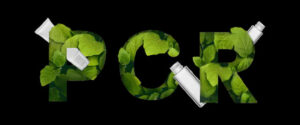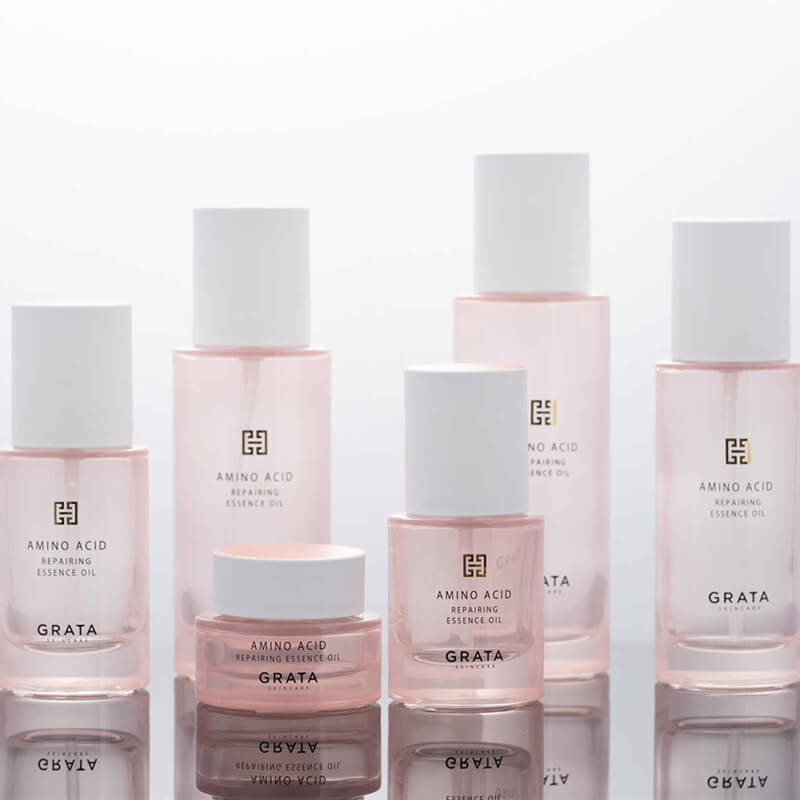PCR is a big step forward in packaging and we’re excited to see it grow in popularity! With some states enacting regulations on single-use packaging and more and more customers working to limit their carbon footprint, this may be a good time to incorporate PCR packaging into your product line. Read on to learn more about PCR.

What is PCR?
The full name of PCR is Post-Consumer Recycled material, which is exactly what it sounds like. It is the plastic that is recycled after use, that is, recycled recycled materials, usually referring to recycled materials such as PET, PP, HDPE, etc., and then processed for use. Plastic raw materials for the manufacture of new packaging materials. To put it figuratively, discarded packaging is given a second life.
Why use PCR in packaging?
Mainly because doing so helps protect the environment. Virgin plastics are often processed from chemical raw materials, and reprocessing has enormous benefits for the environment. The more people using PCR, the greater the demand. This in turn drives more recycling of used plastic packaging and further the commercial process of scrap recycling, which means less plastic ends up in landfills, rivers, oceans. Many countries around the world are enacting legislation mandating the use of PCR plastics. Using PCR plastic also adds a sense of environmental responsibility to your brand, which will also be a highlight of your branding.

How to make PCR?
To produce resin pellets for PCR container manufacturing, recyclers first collect large quantities of recyclable plastic items, including old bottles, bags, cups, trays and other plastic products that can be melted and reused. Collected plastic recyclables are sorted and sent to recycling centers that specialize in refining recyclables into raw materials. In recycling centers, sorted resins are separated by plastic type (PET, HDPE or PP), thoroughly cleaned and processed. The most common way to dispose of recycled plastic is to grind and melt it into small pellets. These raw resin pellets are then used to make new plastic products and containers. Another approach, known as chemical recycling, involves exposing resins to specific chemicals and temperatures in order to break them down into reusable feedstock components. While effective, chemical recycling is significantly more expensive than traditional plastic recycling, making it less appealing to many.

Are there any disadvantages to using PCR?
PCR plastic may be a different color than virgin plastic and may contain specks or other impure colors. Also, PCR plastic feedstock has a lower consistency compared to virgin plastic, making it more challenging to plasticize or process.
Color and ingredient ratio
Clear, natural and white containers made from PCR tend to have a light grey/yellow tint. This is simply due to the recyclability of plastic and has no direct bearing on the quality of the container itself or product safety. However, for those who are reluctant to use PCR packaging due to its unique color, there are ways to minimize and mask discoloration of the plastic.
1. The unique grey/yellow tint of PCR plastic is most prevalent in containers made from 100% recycled material. Therefore, when less recycled material is used, the color of the container is reduced. Mixing recycled plastic with virgin resin results in a brighter, cleaner end product. For example, clear PCR containers made from 50% recycled material will appear less discolored than 100% recycled clear PCR containers, but the slight tint will still be noticeable.
2. A better way to get rid of PCR gray/yellow tint is to use darker colors such as amber, blue, black or green when designing product packaging. This is preferable to the methods described above because in many cases, colored PCR is indistinguishable from the colored original resin. This solution offers the benefits of using 100% recycled plastic containers without the potential challenges of using containers that appear to be recyclable. In our experience, both clients and product designers love this option.

Why is PCR plastic “favored”?
1. PCR plastic is one of the important directions to reduce plastic pollution and contribute to “carbon neutrality”: After the unremitting efforts of several generations of chemists and engineers, plastics produced from petroleum, coal and natural gas are light and durable because of their light weight and durability. , beautiful and other characteristics, it has become an indispensable material for human life. However, the massive use of plastic also leads to a large amount of plastic waste. However, PCR plastics have become one of the important directions to reduce plastic environmental pollution and help the chemical industry move towards “carbon neutrality”. Recycled plastic pellets are mixed with virgin resin to create a variety of new plastic products. This way, not only reduces carbon dioxide emissions, but also reduces energy consumption.
2. The use of PCR plastics to further promote waste plastic recycling: The more companies that use PCR plastics, the greater the demand, which will further improve the recycling of waste plastics, and will gradually change the mode and business operation of waste plastics recycling, which means more Less waste plastics landfill, incinerate and exist in the natural environment.
3. Policy promotion: The policy space for PCR plastics is opening up. Take Europe as an example, the EU plastics strategy and the legislation on plastics and packaging taxes in Britain and Germany. For example, the British Revenue and Customs has issued a “plastic packaging tax”, and the packaging tax rate of less than 30% recycled plastic is 200 pounds per ton. The demand space for PCR plastics has been opened up through taxes and policies.
4. There are many scenarios where PCR can be used. For example, in the cosmetic packaging industry, PCR can be used for packaging and accessories, especially in glass bottles. PCR is mostly used as accessories for glass bottles, such as pump heads, bottle caps, droppers, etc. It is non-toxic and environmentally friendly.
Conclusion
In a word, using a certain proportion of recyclable polymers in packaging allows PCR plastics to be better used in suitable products, showing your sense of responsibility as a manufacturer for environmental protection, and indeed doing your best for the cause of environmental protection made a substantial contribution.
We are glass manufacture and for the accessories. If you have the idea of using PCR as accessories in glass bottles, Shengwei’s accessories use a variety of materials, which can fully meet your needs diverse needs,
To get more information about PCR glass, please click: PCR Knowledge–Something about PCR Glass














